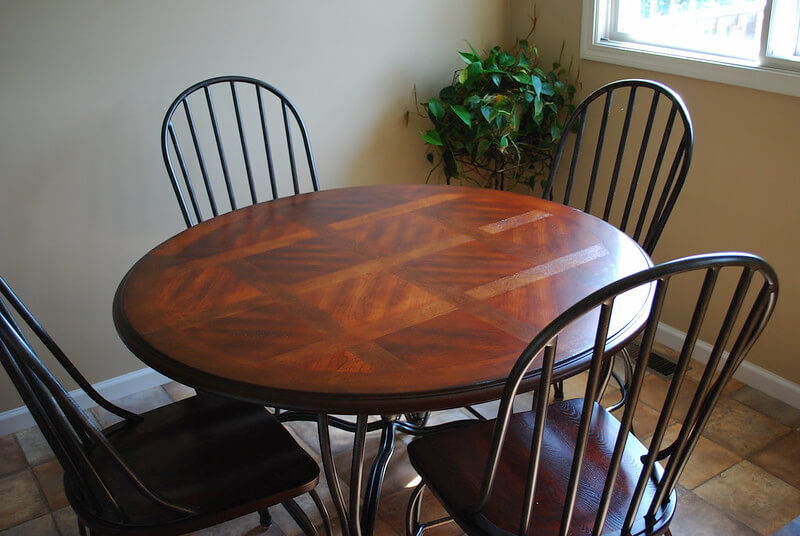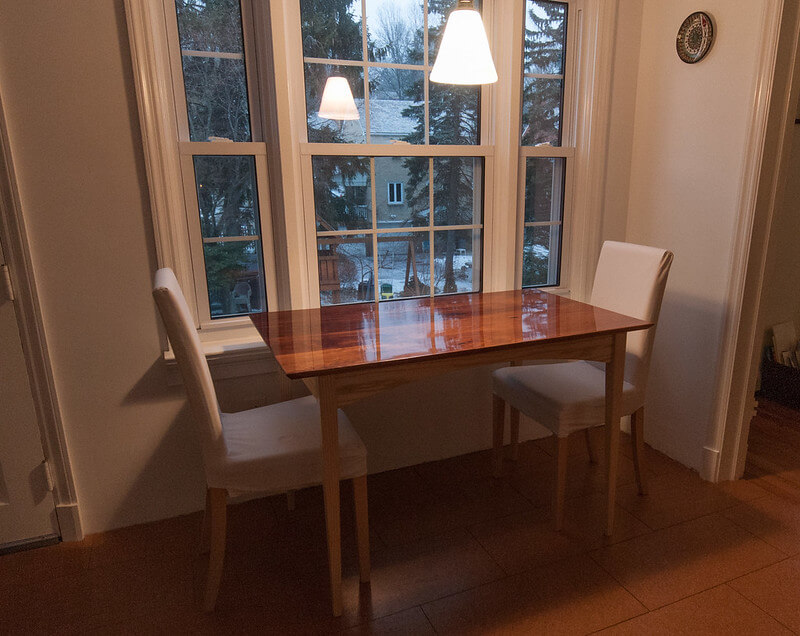Finishing or refinishing your kitchen table with polyurethane may seem like the best option, but with so many variations available, choosing the right kind can be overwhelming for beginners.
However, don’t worry, as this guide will help you determine the best type of polyurethane to use for your kitchen table. We will cover the differences between water-based and oil-based polyurethane, the various sheen options, and recommend reliable brands of polyurethane that will meet your needs.
Keep in mind that this guide may be extensive, but by the end of it, you will be equipped with the knowledge needed to confidently choose the best polyurethane for your kitchen table. So sit back, relax, and let’s dive in!
Is water-based or oil-based polyurethane better for a table?

Durability
Oil-based polyurethane has been a popular choice among experienced finishers for a long time. In comparison, water-based polyurethane is a newer option and less popular among woodworkers. Some claim that oil-based polyurethane is the most durable type, but experts agree that water-based polyurethane is also highly durable. A test by YouTuber Seth Miller (will link the video of the test and outcome below) even showed that water-based polyurethane can be as durable, if not more durable, than oil-based polyurethane.
When choosing a finish for a kitchen table, it’s important to consider more than just durability. The appearance of the finish is also an important factor to consider. Let’s examine the differences in appearance between water-based poly and oil-based poly.
Appearance
When comparing oil-based and water-based polyurethane, the difference in appearance is distinct, while their durability is comparable. Water-based polyurethane dries clear and doesn’t yellow over time, making it an ideal option if you want to maintain the natural color of your wood. However, be cautious when using it on darker woods, as it may make them look colder and less inviting.
In contrast, oil-based polyurethane is known for leaving an amber tone on the wood, which can be desirable on certain wood types or finishes, such as antique or aged looks. However, the yellowing effect can be uneven and may not be suitable for lighter woods or modern finishes.
Odor and ease of application
When choosing a finish for a kitchen table, it’s important to consider odor, as the table will be used indoors and may require immediate use after the finish is dry. One factor that affects the odor of a finish is the amount of volatile organic compounds (VOCs) it contains. Different brands have different VOC levels, but in general, water-based polyurethane has fewer VOCs than oil-based polyurethane. This makes water-based polyurethane a better choice for indoor projects like finishing a kitchen table, as it will produce less odor.
However, there is a trade-off to consider: application. Oil-based polyurethane is easier to apply than water-based polyurethane. The longer drying time of oil-based polyurethane allows for more time to fix mistakes such as unevenness and brush marks. Water-based polyurethane, on the other hand, dries much faster, which means that it requires a steady and fast hand to apply evenly. Therefore, water-based polyurethane may not be the best choice for beginners. That being said different brands of water-based polyurethane dry at different rates.
Key takeaways: Oil-based vs water-based poly for your kitchen table
- Water-based polyurethane is a good option if you want to maintain the natural color of your wood and are sensitive to strong odors.
- Oil-based polyurethane is a good option if you prefer an amber tone or want to achieve an antique or aged look, and if you prioritize ease of application.
- Both types of finishes can be highly durable.
- Ultimately consider your priorities when choosing between oil-based and water-based polyurethane for your kitchen table finish as the choice is dependent on personal preference and needs.
Choosing a sheen for your kitchen table
The debate over sheen is based on considerations of longevity, ease of cleaning, and aesthetics, as we discussed in our previous post on choosing a sheen for stairs. While the matter may be different for choosing a sheen for a kitchen table, the principles remain the same.
In terms of longevity, a glossy finish is generally more durable and can withstand wear and tear better than matte finishes. However, glossy finishes tend to show scratches, scuffs, and other imperfections more easily than matte finishes.

When it comes to ease of cleaning, glossy finishes are easier to clean than matte finishes, as they are less prone to staining and dirt buildup. Matte finishes, on the other hand, are more difficult to clean and may require specialized cleaning products.
In terms of aesthetics, choosing the right sheen depends on personal preference and the overall look or setting of your dining area. Glossy finishes tend to create a more formal and elegant look, while matte finishes give a more casual and natural look. Satin to semi-gloss finishes are a good compromise, as they offer a bit of shine while still being easy to clean and maintain.
i should also add that gloss finishes are less expensiving owing to the fact that they are cheaper to manufacture as no flatten agents are added.
Best polyurethane for dining table
Looking for the perfect finish for your kitchen table? Look no further than General Finishes High Performance Water Based Topcoat.
Not only is it the best choice for a table top due to its low odor, but its water-based formula means that it won't alter the natural color of your wood. Choose the satin finish for a subtle sheen that's easy to clean and looks great, or opt for another sheen level that fits your personal preference.
With General Finishes High Performance Water Based Topcoat, your kitchen table will not only look beautiful but also be protected from daily wear and tear. It's the ideal choice for anyone looking for a durable and attractive finish for their kitchen table.
While General Finishes is our top pick overall, and comes with great perks and multiple recommendations from both finishing experts and verified customers, it is still quite expensive. But you know what they say, you get what you pay for. Overall, it is the best polyurethane for your kitchen table and still the best value for your money.
Best oil-based polyurethane for kitchen table
Introducing the Minwax Sparkling Semi-Gloss Polyurethane, the perfect choice for those seeking a vibrant and dazzling look for their wooden surfaces. Specifically designed for display furniture sets and other pieces that demand a glossy finish, this unique formulation from Minwax ensures both stunning aesthetics and reliable protection.
Final verdict
In conclusion, when it comes to choosing the best polyurethane for your kitchen table, it’s important to consider factors like durability, appearance, odor, and ease of application. Water-based polyurethane is a great choice for those who want to maintain the natural color of their wood and are sensitive to strong odors, while oil-based polyurethane is better for those who want to achieve an antique or aged look and prioritize ease of application. Both types of finishes can be highly durable.
Choosing a sheen for your kitchen table depends on personal preference, but glossy finishes are generally more durable and easier to clean than matte finishes. In addition, the General Finishes High Performance Water Based Topcoat is the best overall option for a kitchen table finish, as it has a low odor and a water-based formula that won’t alter the natural color of your wood.

